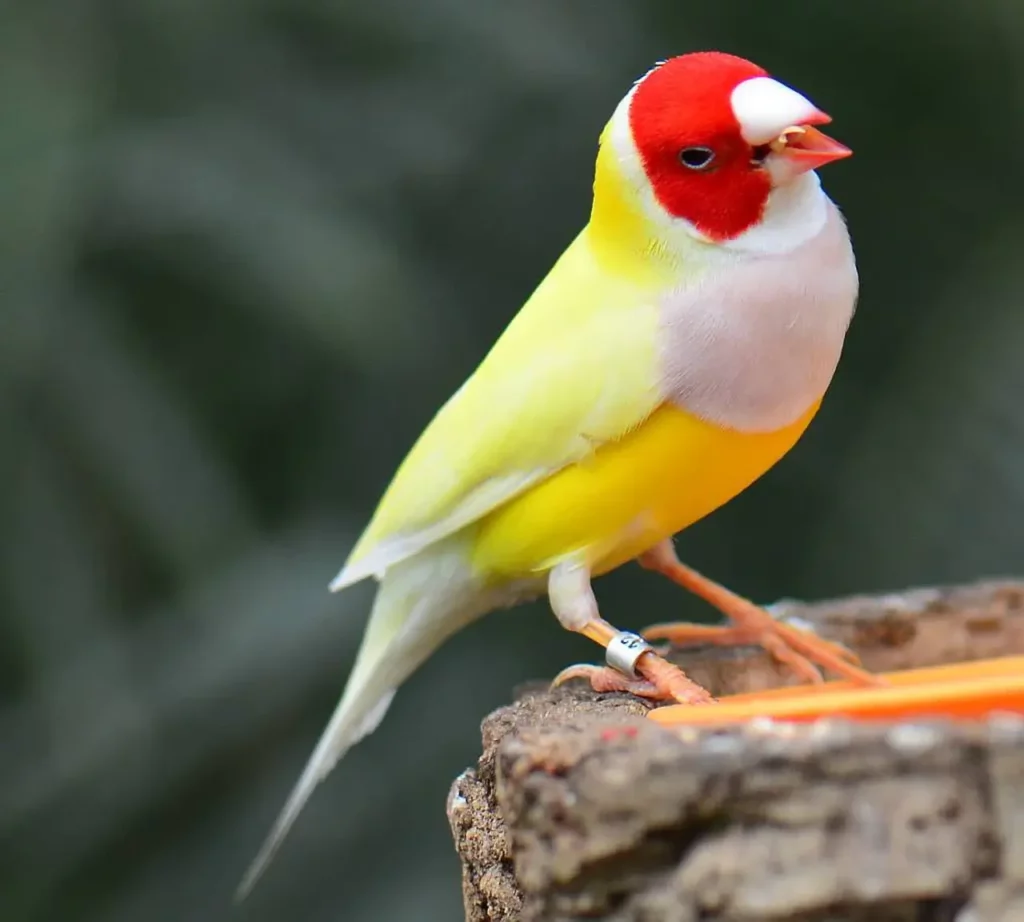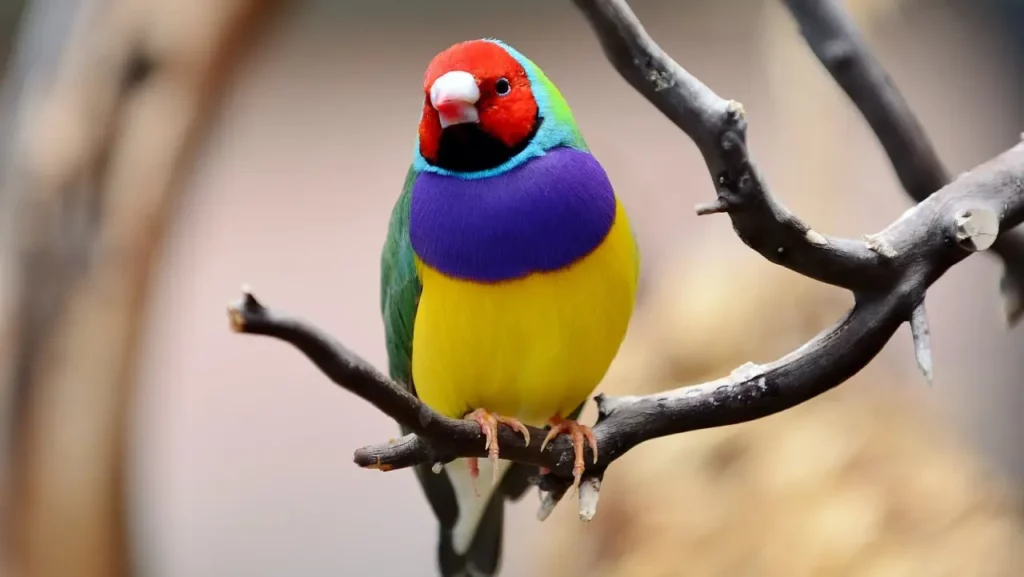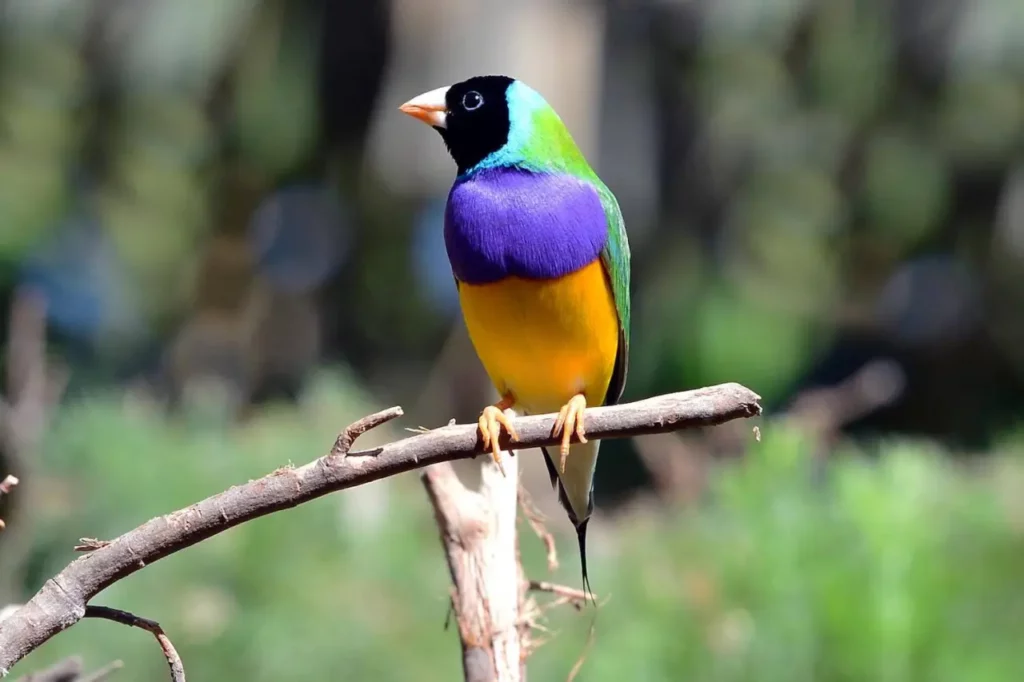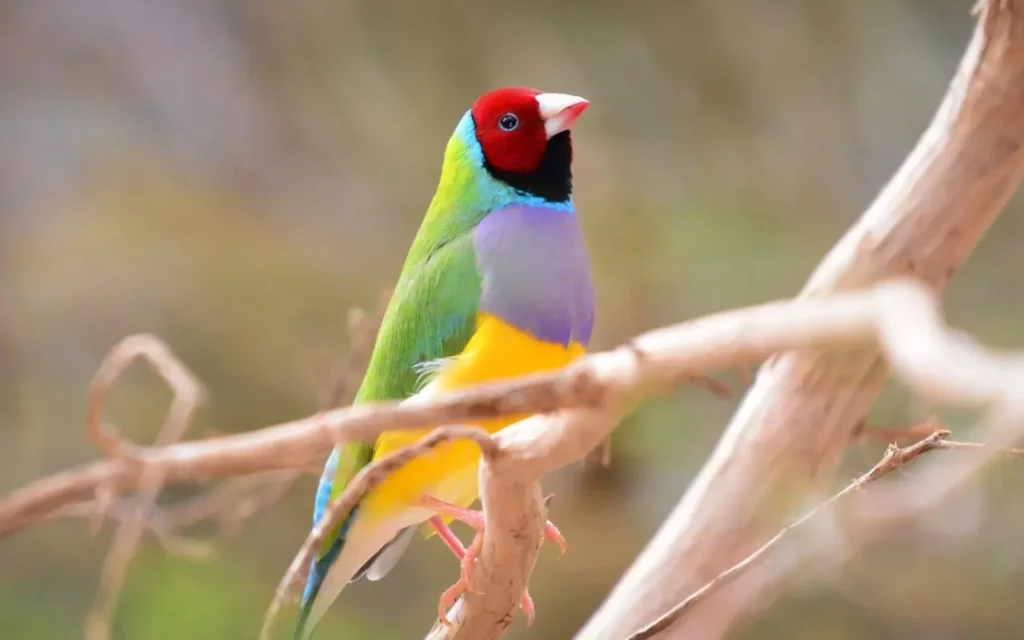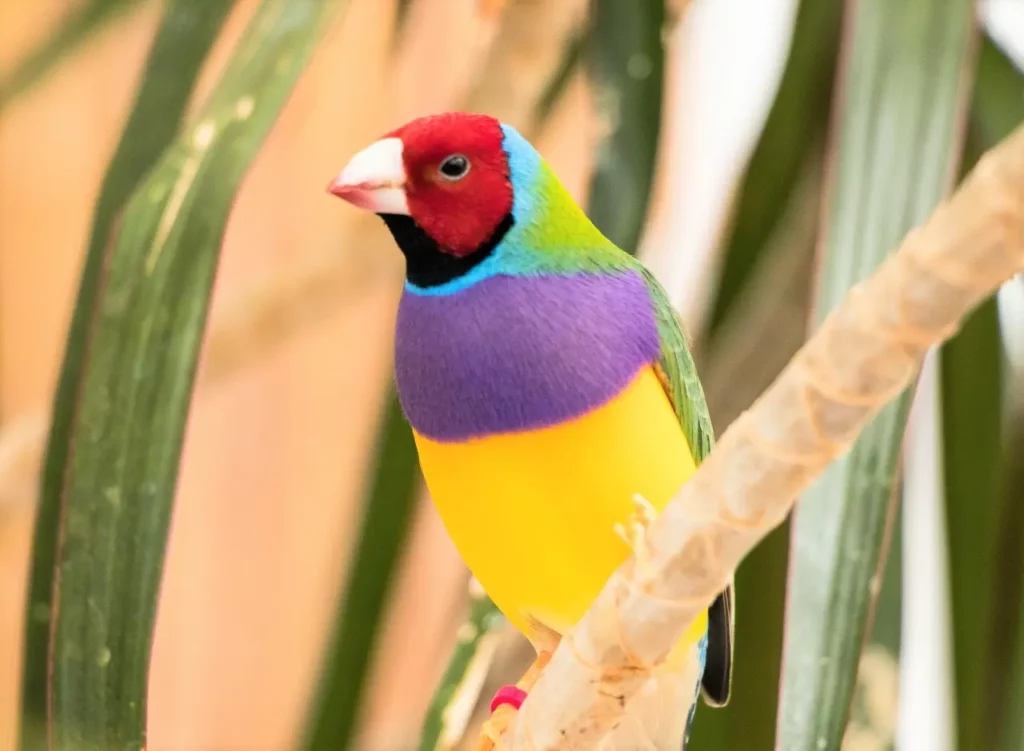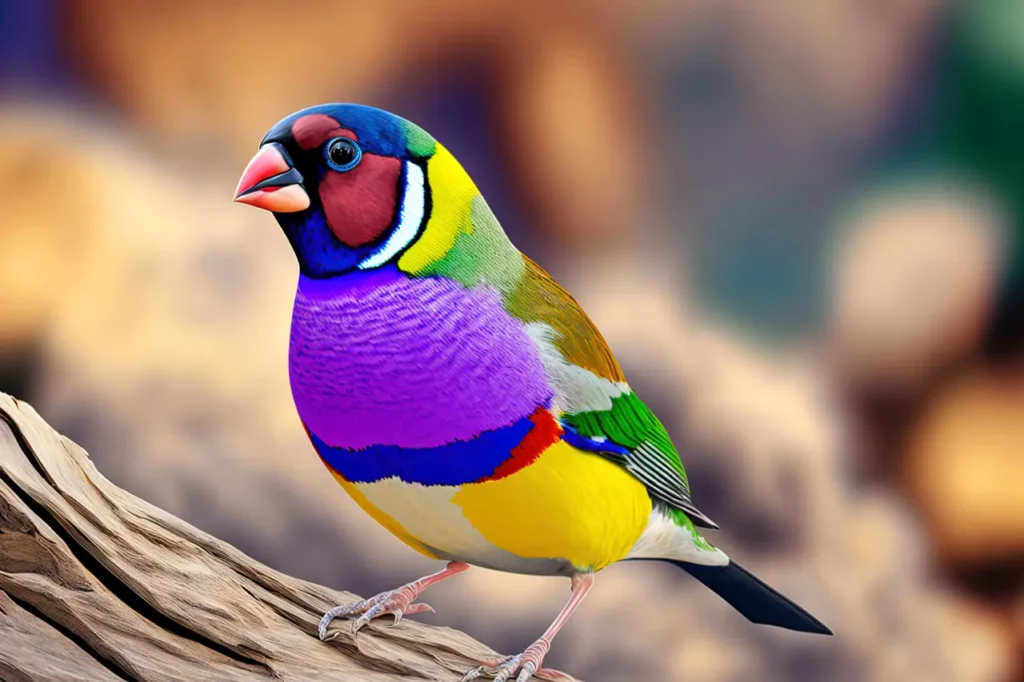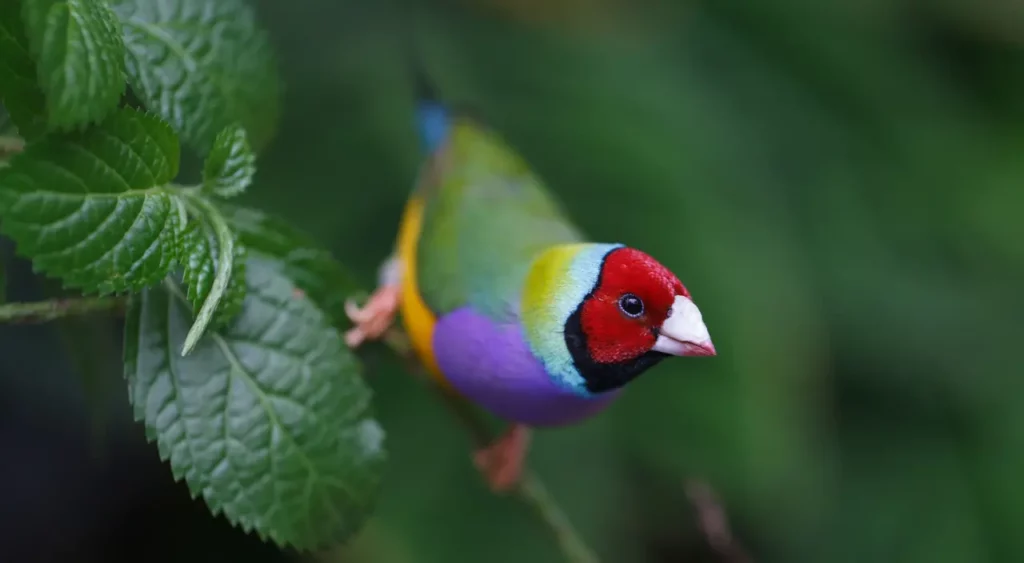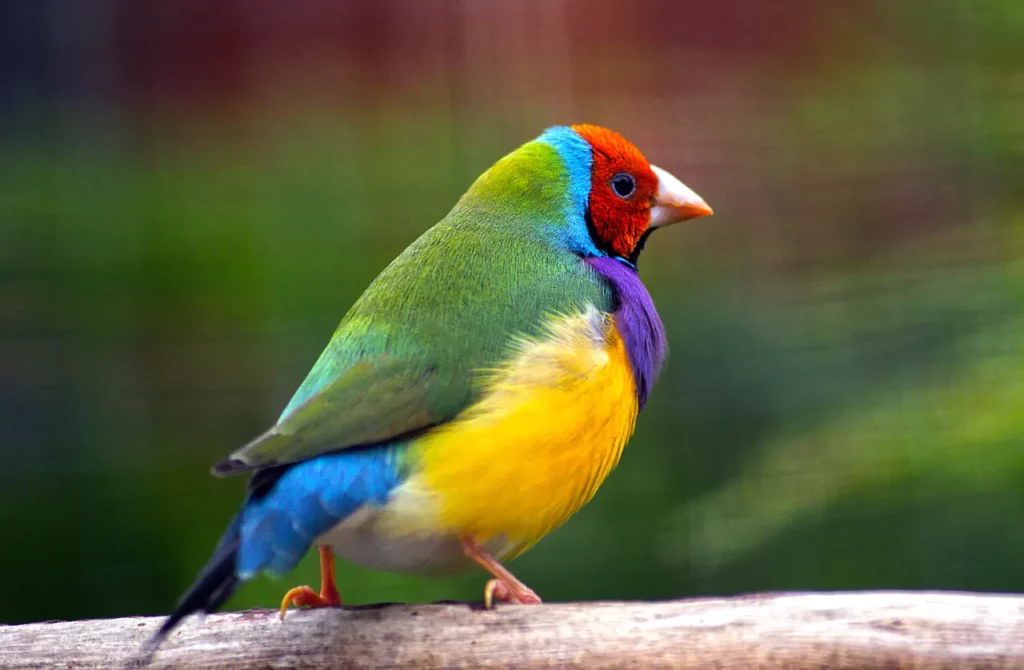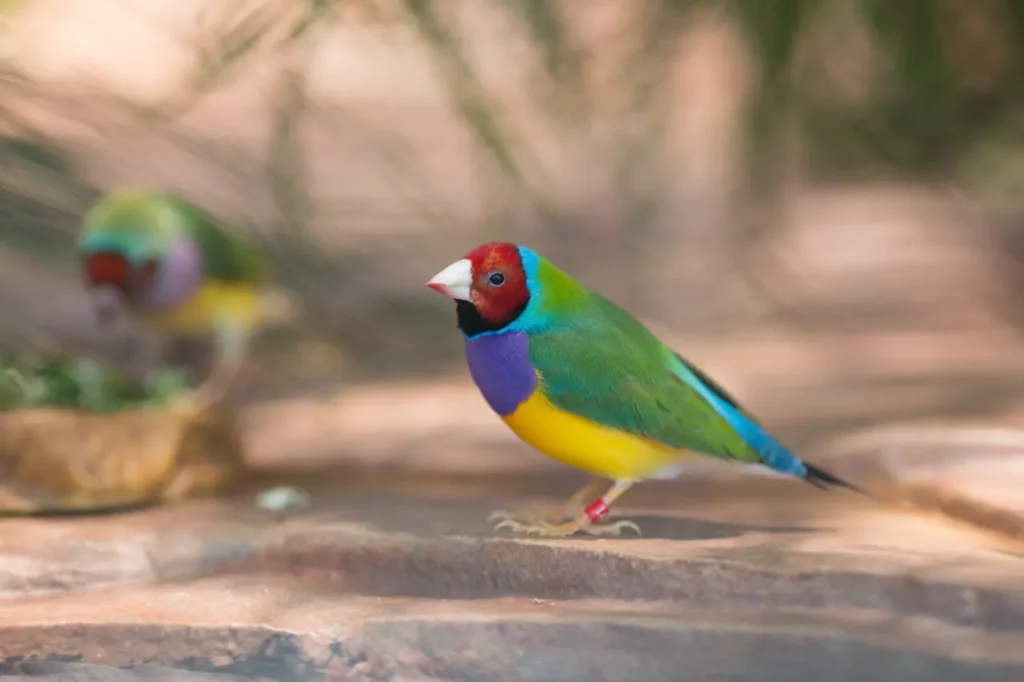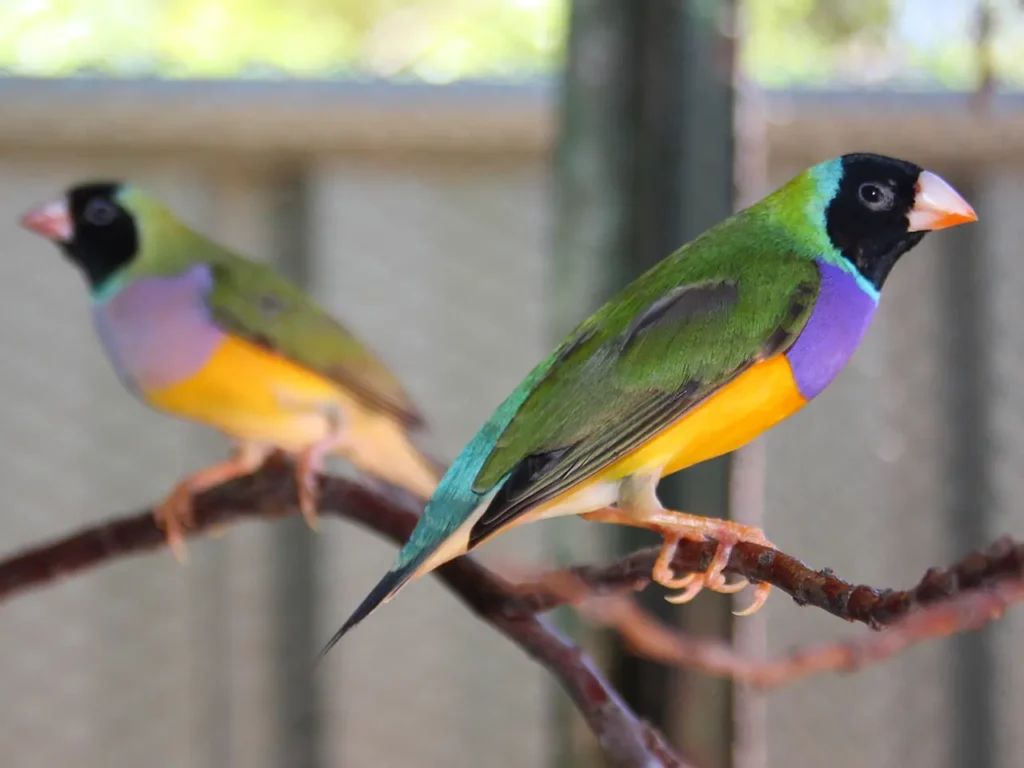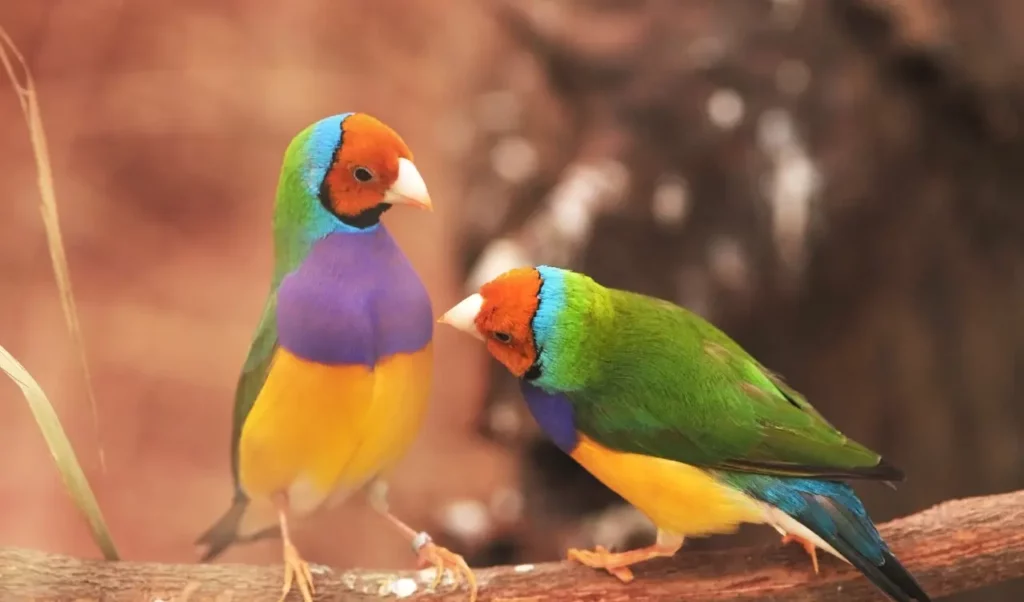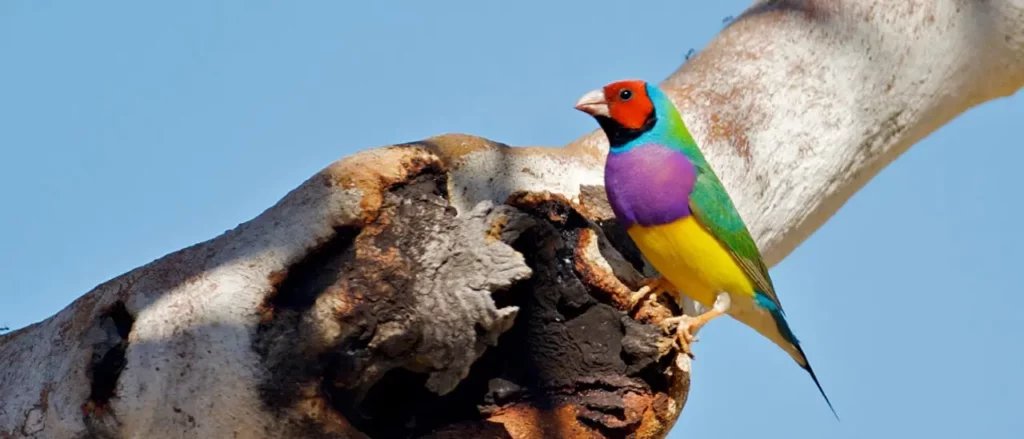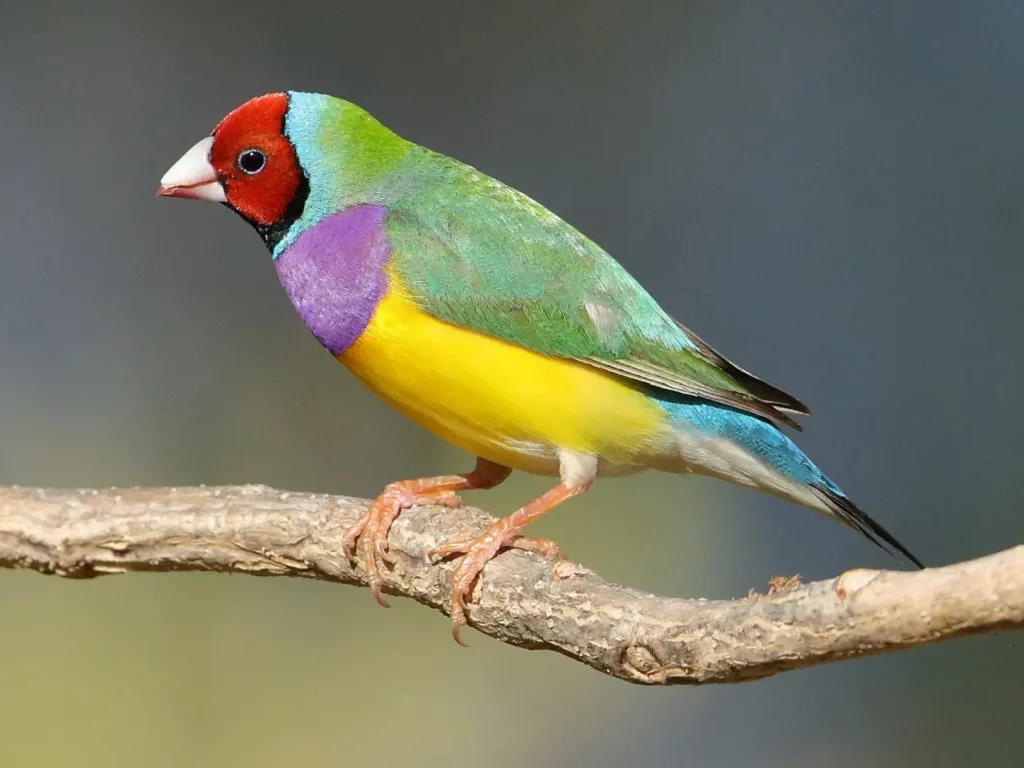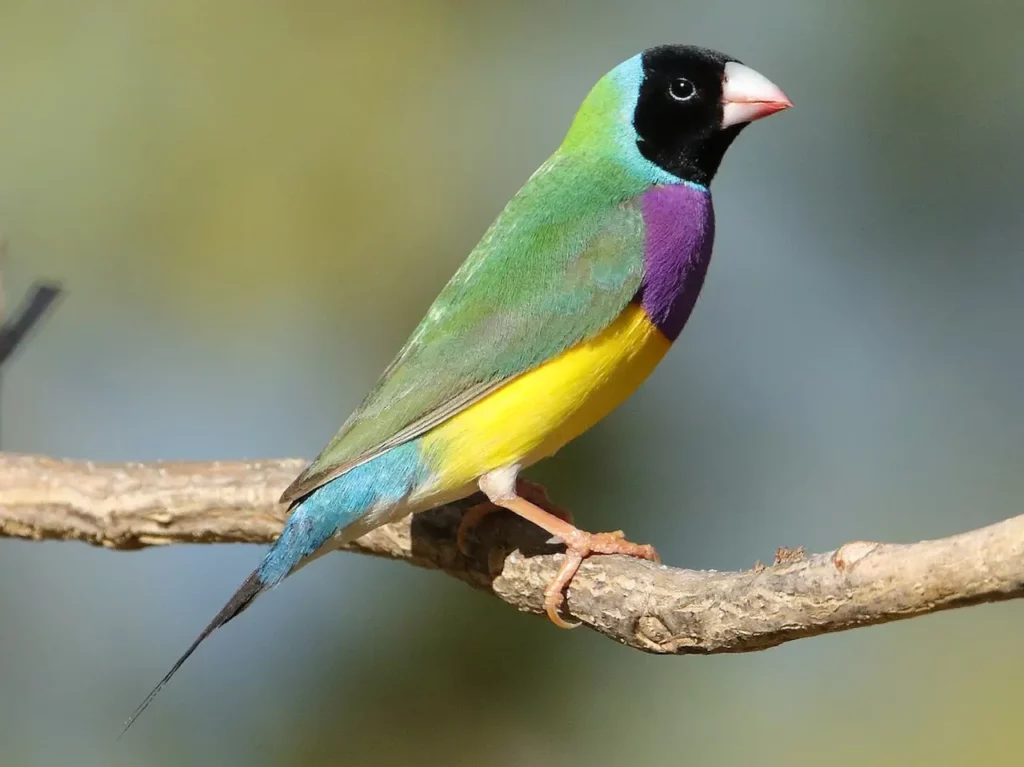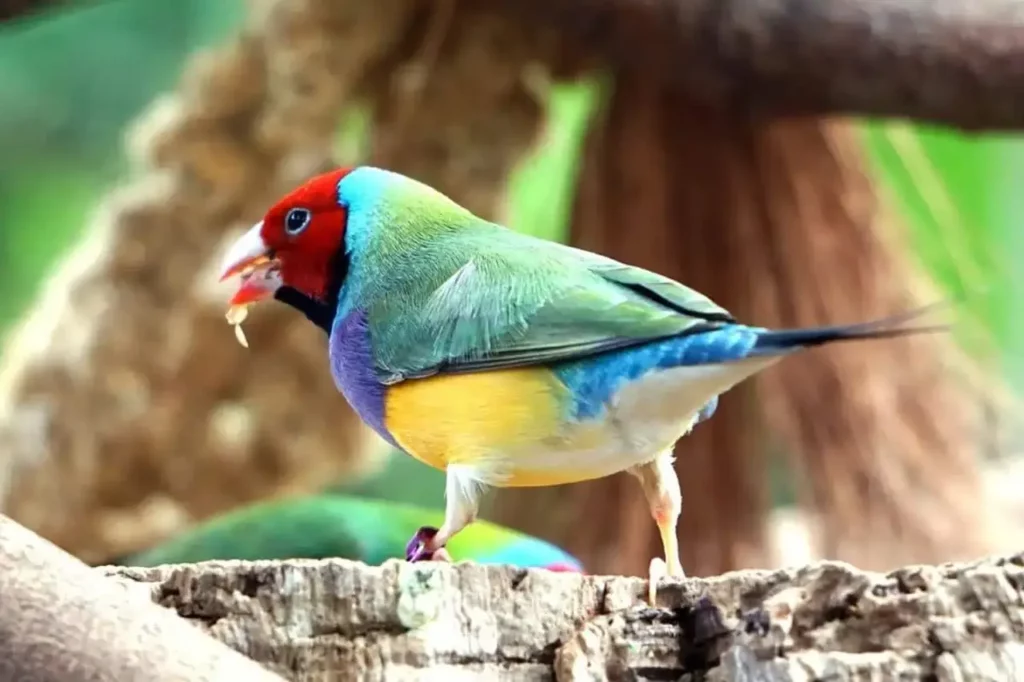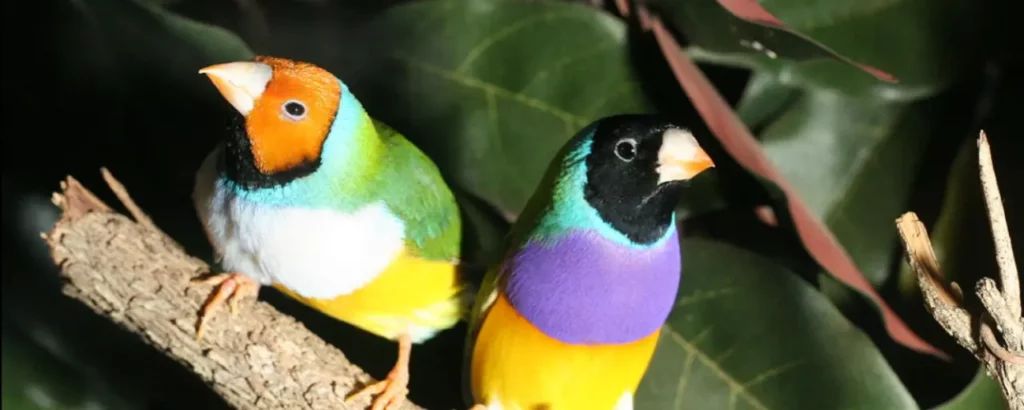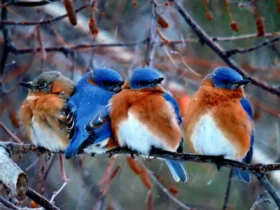The Gouldian Finch, also known as the Seven-Color Finch, is named for its vibrant and multi-colored plumage. It is no surprise that this bird species is highly popular and kept as a pet in many households. However, after decades of decline, the Gouldian Finch is currently facing the risk of extinction in the wild.
Gouldian Finch video
Here are three fascinating facts about the Gouldian Finch
- The heads of Gouldian Finches typically come in three different colors. Around 70% to 80% have black-faced heads, while 20% to 30% have red heads. The Gouldian Finch with a yellow head is the rarest, with only around 3,000 individuals possessing this distinctive feature.
- This tropical bird species prefers hot temperatures above 80°F (or 27°C).
- The brighter plumage and the ability to produce melodious songs in males have evolved to attract mates during the breeding season. The intensity of coloration and singing can serve as signals of strength and health to attract female birds.
Where do Gouldian Finches live?
This bird species is primarily found in the northern regions of Australia. However, it now only occurs in a few locations around the Northern Territory, the Kimberley region of Western Australia, and occasionally extends further east to Queensland. Gouldian Finches prefer to inhabit grasslands and open plains with nearby water sources and sufficient Smooth-barked Apple trees for their habitat.
Appearance and Behavior of Gouldian Finch
Physical Characteristics
The Gouldian Finch has a length and wingspan of about 5.5 inches. This bird species stands out with its seven-color rainbow plumage. The colors are distributed as follows:
- Red, yellow, or black on the head.
- A band of light green or pale blue around the shoulders.
- Purple wing feathers.
- Gradually fading from light yellow to white on the belly.
Behavioral Traits
Gouldian Finches are social birds that form large flocks of hundreds of individuals outside the breeding season. Both males and females can produce calls, chirps, chatters, and songs to communicate with each other.
During the daytime, when they are most active, the dense foliage of the Smooth-barked Apple trees provides protection from the intense sunlight and predators.
What do Gouldian Finches eat?
The diet of Gouldian Finches consists of various types of seeds and grasses throughout the year, depending on the availability of food sources.
Like many other finch species, their stout and powerful beaks are well adapted for cracking open and consuming seeds. They can consume up to 35% of their body weight in seeds per day.
Breeding Process of Gouldian Finches
During the breeding season, typically between December and April, male finches display vibrant courtship behaviors by puffing out their chests, fluffing their feathers, and bobbing their heads. Females respond to these displays by preening their beaks.
Once paired, the female lays one egg per day until the clutch size reaches around 4 to 8 eggs. Both the male and female play important roles in incubating the eggs and caring for the nestlings. After approximately two weeks of incubation, the nestlings hatch. They are initially featherless with a blue spot at the corner of their beaks, which helps the parents locate them in the darkness.
The fledglings grow their feathers fully by around 3 to 4 weeks of age. At this stage, both males and females have duller grayish-green plumage. The sex of the finches becomes apparent only when they reach 6 to 8 weeks of age.
Gouldian Finches live for about eight years in captivity, while wild individuals generally have shorter lifespans.
Distinguishing between Male and Female Gouldian Finches
Male and female Gouldian Finches have relatively similar colors. However, determining their gender is relatively easy through external color observation:
Males typically have brighter and more intense plumage compared to females, with distinct color patches on their bodies. Males also tend to have longer tail feathers in the center of their tails and sing more frequently when they reach adulthood.
Female Gouldian Finches have duller and lighter plumage than males. During the breeding season, the beaks of female Gouldian Finches gradually turn black.

Frequently Asked Questions about Gouldian Finches
How long is the incubation period for Gouldian Finches?
The average incubation period for this species is about 2 weeks.
When do Gouldian Finch chicks leave the nest?
The chicks will leave the nest around three to four weeks after hatching. However, they only become independent when they reach 40 days old.
Can Gouldian Finches be kept as pets?
Gouldian Finches are highly sought after as pets due to their vibrant plumage, charming personalities, and relatively low care requirements. Many people find them to be cheerful and enjoyable companions. The price of a normal Gouldian Finch is usually not high, although prices can increase for rare color mutations.
Are Gouldian Finches noisy?
Both male and female Gouldian Finches produce pleasant, melodic sounds that are not excessively loud or bothersome.
Gouldian Finch Population Today
There used to be millions of Gouldian Finches living across Australia. However, now there are only around 2,500 individuals remaining in the wild.
Over the past centuries, Gouldian Finches have faced various threats, including habitat loss (especially from wildfires), predators, diseases, and parasites (such as mites).
Their colorful and striking plumage has also made them victims of human hunting. A significant number of them have been captured by humans for personal use.
Australia banned trapping and exporting Gouldian Finches in the 1980s. The Australian government has also listed them as an endangered species.
Gouldian Finch images
